Like many endeavors, success in defensive-style shooting is dependent on the proper execution of certain building blocks. I have heard them referred to as the basics, foundational skills or fundamentals, but just about every trainer and shooting school devotes some significant attention to this area. Ultimately, these are the qualities that we need to refine in order to become proficient with the handgun. Should they be deficient, performance will no doubt suffer.
When engaged in defensive-style shooting, those core elements that contribute to success include the following:
- Stance
- Grip
- Sight Alignment/Sight Picture
- Trigger Control
- Follow Through
I have been involved in firearms instruction for the better part of my adult life at both the basic and advanced levels and can state without reservation that a great many practitioners have some very strong views on this topic.
A few years back, I put in quite a bit of time doing instructor seminars for experienced law enforcement trainers who had developed some hard and fast ideas relative to defensive-style/tactical shooting. When teaching the handgun segment of the program, I would ask my students to identify which of the fundamentals was the most important in contributing toward success. I had them close their eyes and raise their hands as I mentioned them one by one and recorded their responses.
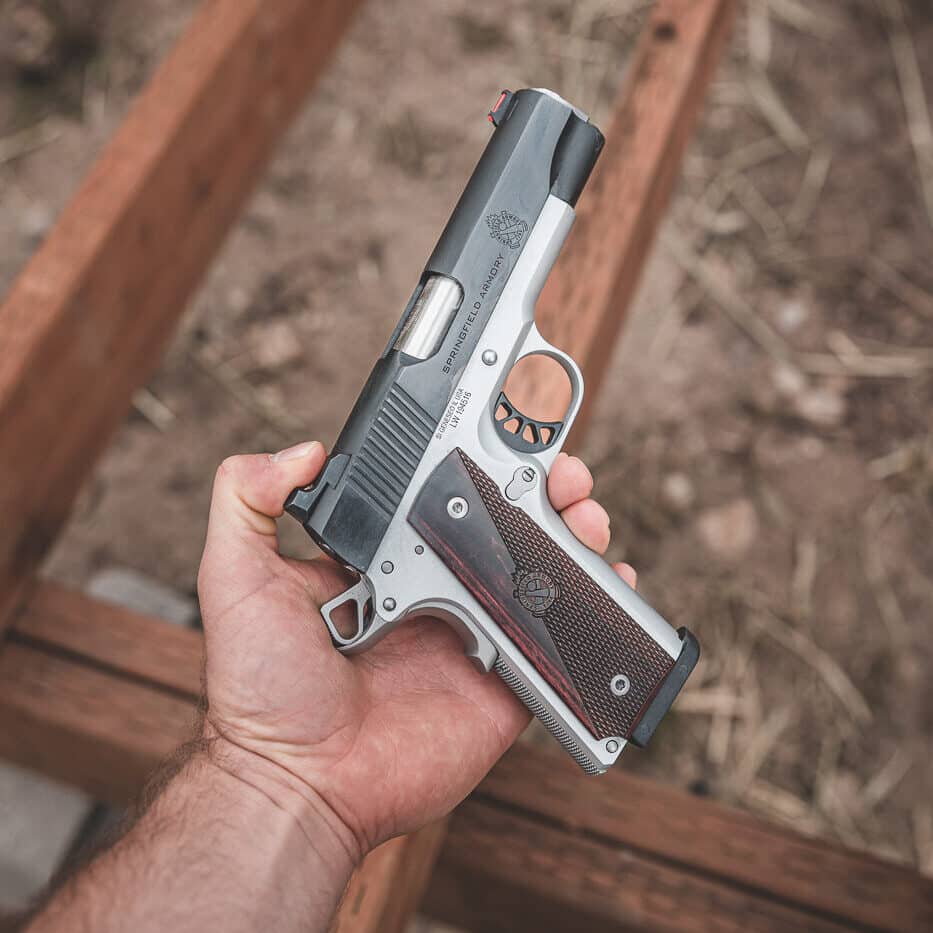
More often than not, it often came down to a 50/50 split between sight alignment/sight picture versus trigger control. I asked my students to defend their position and to say the least, there was often quite a bit of “lively discussion”. While it never came down to fisticuffs, some very strong arguments and perhaps even a few insults were traded; but, we were eventually able to move beyond it and get back on track.
I thought it was odd that very few of my student instructors mentioned grip as being the most important. Your grip is the connection to the pistol and if deficient, the aforementioned fundamentals of trigger control and sight alignment/sight picture will suffer. In reality, there is no one fundamental that is the most important and all contribute to hits on target. Unfortunately, when problems come up, the cause is often a less-than-optimal grip.
An Unappreciated Fundamental
From my perspective, grip remains the most overlooked of the defensive-style shooting fundamentals. When problems arise, many shooters and well-intentioned instructors begin to take a hard look at trigger control or sight alignment and pay little attention to the grip. They rationalize that as long as you have a tight, two-hand grip on the pistol all is well; but that is hardly the case. A less-than-optimal grip will compromise trigger control and cause the sights to move off the point of aim as soon as rearward pressure is applied to the trigger. At very close range, on target results may look satisfactory but it all goes up on the rocks as distance increases or when shooting at speed.
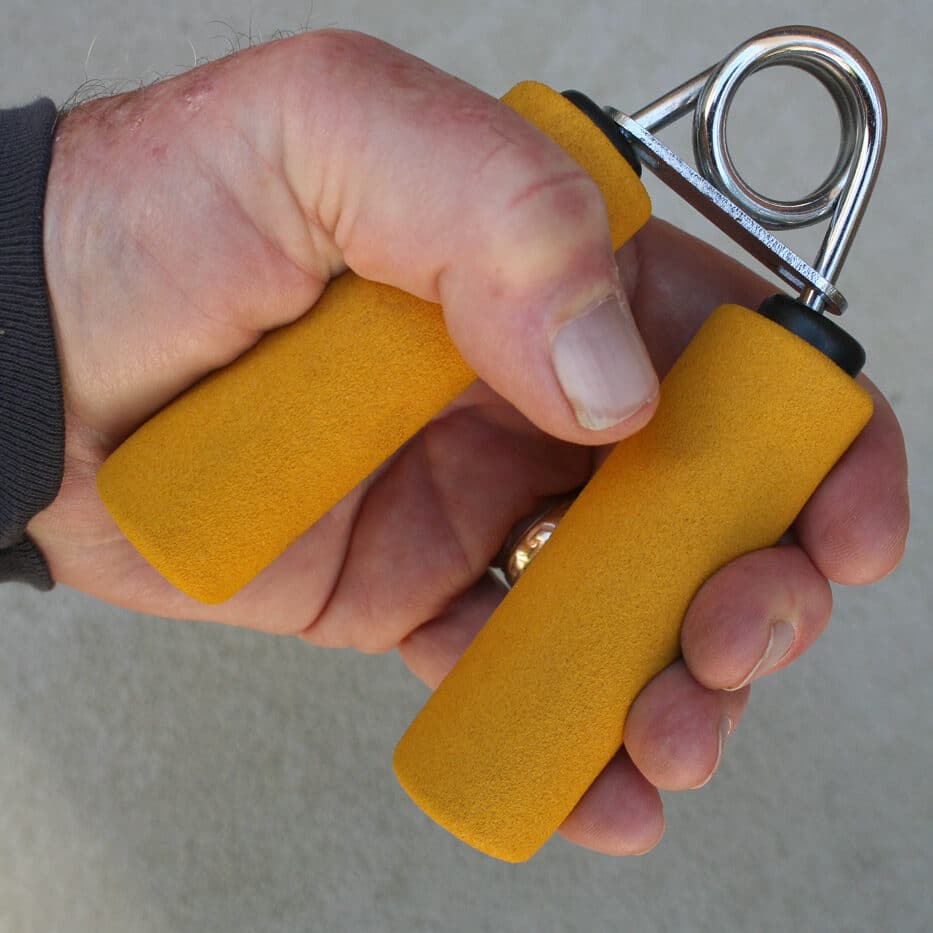
As indicated earlier, the grip is your connection to the pistol. When your grip is not optimized, you will never be able to shoot to your full potential and performance will suffer. A proper grip aligns the sights, controls recoil and minimizes muzzle flip to help you get back on target faster for follow-up shots. At typical combat distance, a proper grip on your pistol will get you on target even if you can’t define the sights due to darkness or extreme stress.
It is generally agreed that getting two hands on the pistol will likely result in better hits on target than shooting solo hand. However, when out in the real world we may have to go one-hand-only because we are pushing a loved one out of harm’s way, opening a door, holding a flashlight, or because we have suffered an injury. With that said, we will begin our discussion with establishing a two-hand grip on our pistol. A few points on one-hand shooting will follow.
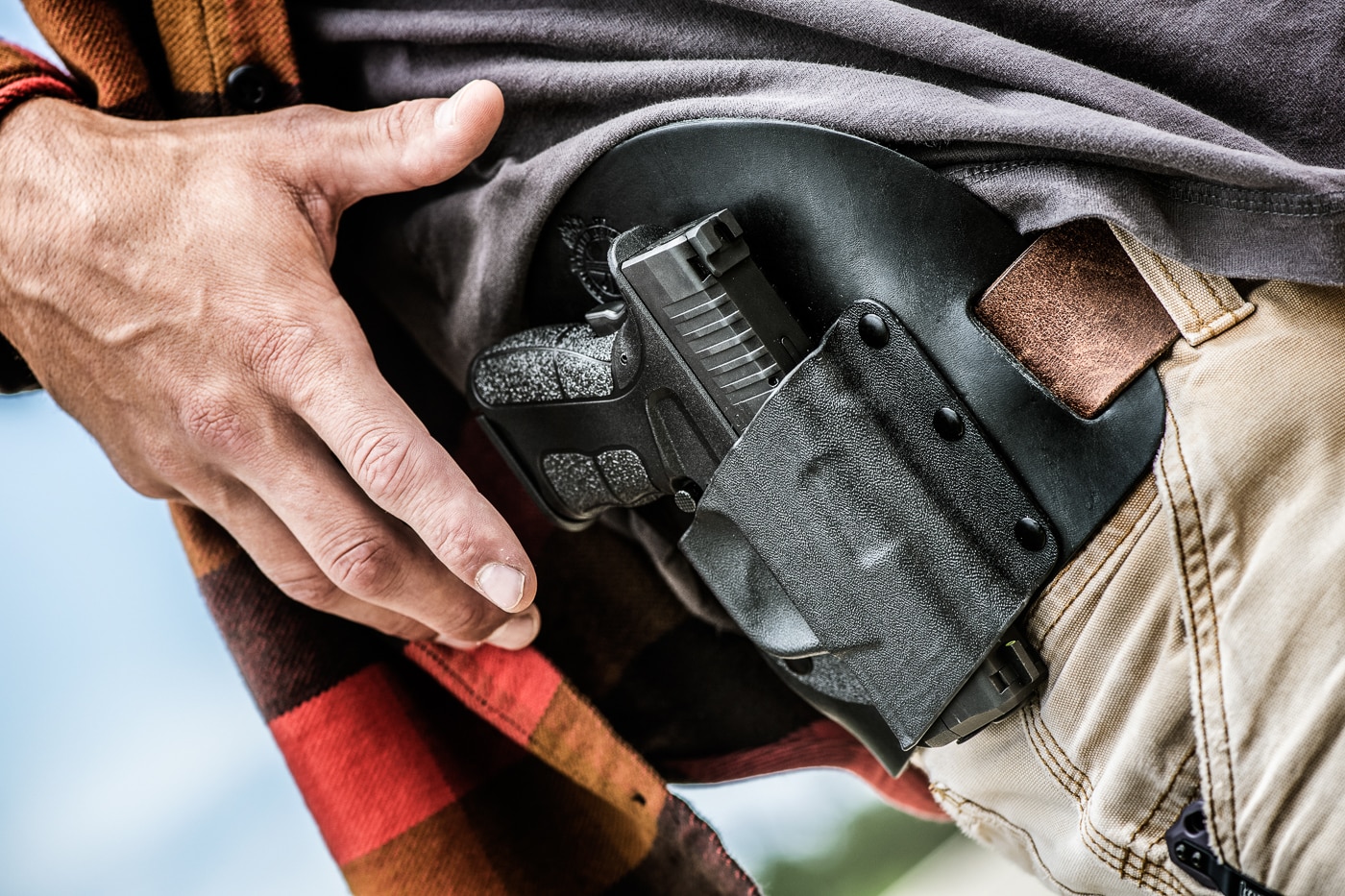
We establish our grip as soon as the dominant hand comes in contact with the holstered pistol. It’s very important that your chosen holster allows you to take a firm and final shooting grip as you release any security devices and begin the draw stroke.
Most modern pistols have very pronounced tang on the backstrap with a recessed area below it. This indented area will be our point of reference. Index the web of the hand between the thumb and index finger and take a firm grip as high as possible on the backstrap. By taking a high grip, it brings the long bones of the arm as close as possible to the axis of the bore to the pistol, which will minimize muzzle flip. This is a very important quality when there is a need to fire fast, subsequent shots on the target.
A second point of contact is made by getting the side of the large knuckle of the middle finger in hard contact with the underside of the trigger guard. This helps mitigate muzzle dip when shooting at speed. The thumb, middle, ring and little finger tightly encircle the grip frame.
Some shooters like to place the middle finger of the dominant hand around the front of the trigger guard. Personally, I think this is ill advised as it weakens the grip. More often than not, that finger flies right off the trigger guard during recoil, particularly when shooting at speed.
Get the Support Hand on the Gun
Once you establish the dominant hand on the pistol, it’s time to get the support hand into the act. Place the palm of the support hand on the opposite side grip panel, trying to establish as much contact as possible.
Like many shooters, I favor a thumbs-forward grip when shooting an autopistol. The support is placed underneath the dominant hand thumb, as high as possible on the grip panel. I know of many highly skilled shooters who like to angle that support side wrist down when establishing the grip, but I find it uncomfortable and prefer a more neutral position.
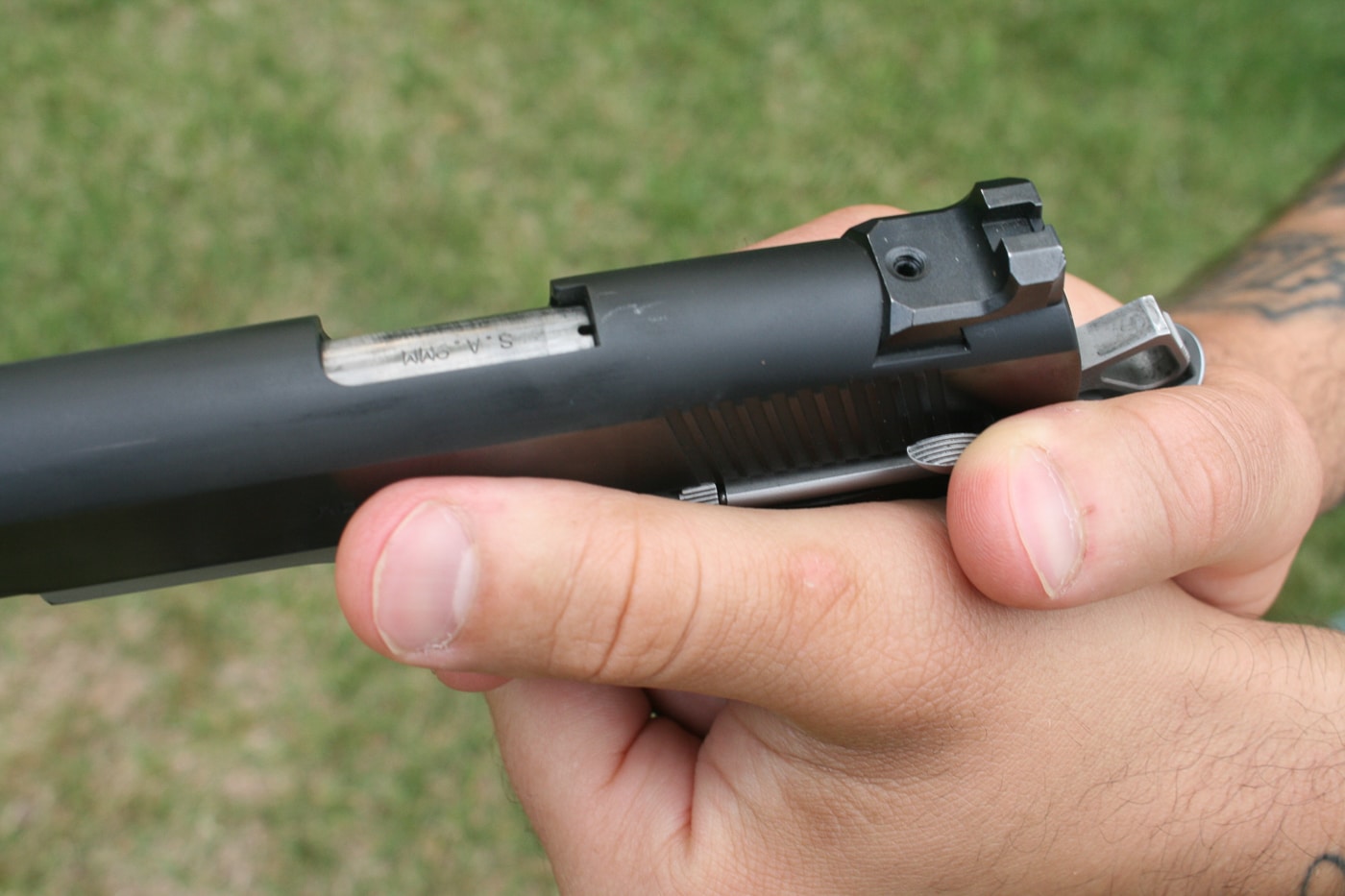
On 1911-style pistols, the thumb of my dominant hand maintains contact with the frame-mounted safety. This allows me to instantaneously sweep the safety down and get into action or snick it back up to place my pistol back on safe. It is very important that the thumbs do not interfere with any external controls on your pistol as it may cause your slide to lock back at the most inopportune time.
Although most of our training involves getting both hands on the pistol, the observed experience tells us that a significant percentage of defensive shootings involve shooting with one hand. Clearly, when shooting the pistol with just one hand, grip becomes even more important. Your practice regimen should reflect this and include a bit of support-hand-only shooting in consideration of an injury.
Grip Size Matters
When autopistols began to push double-action revolvers to the backburner back in the 1980s, it was apparent that at best, hand fit was an afterthought with many designs. Tripling the onboard ammunition capacity of your handgun can afford a huge advantage, but not if it compromises user efficiency. Several popular designs back in the day sported grip frames with the ergonomics of a cereal box that were difficult for anyone with less than a large-size male hand to manage. Quite simply, one can never be at their best with an ill-fitting pistol.
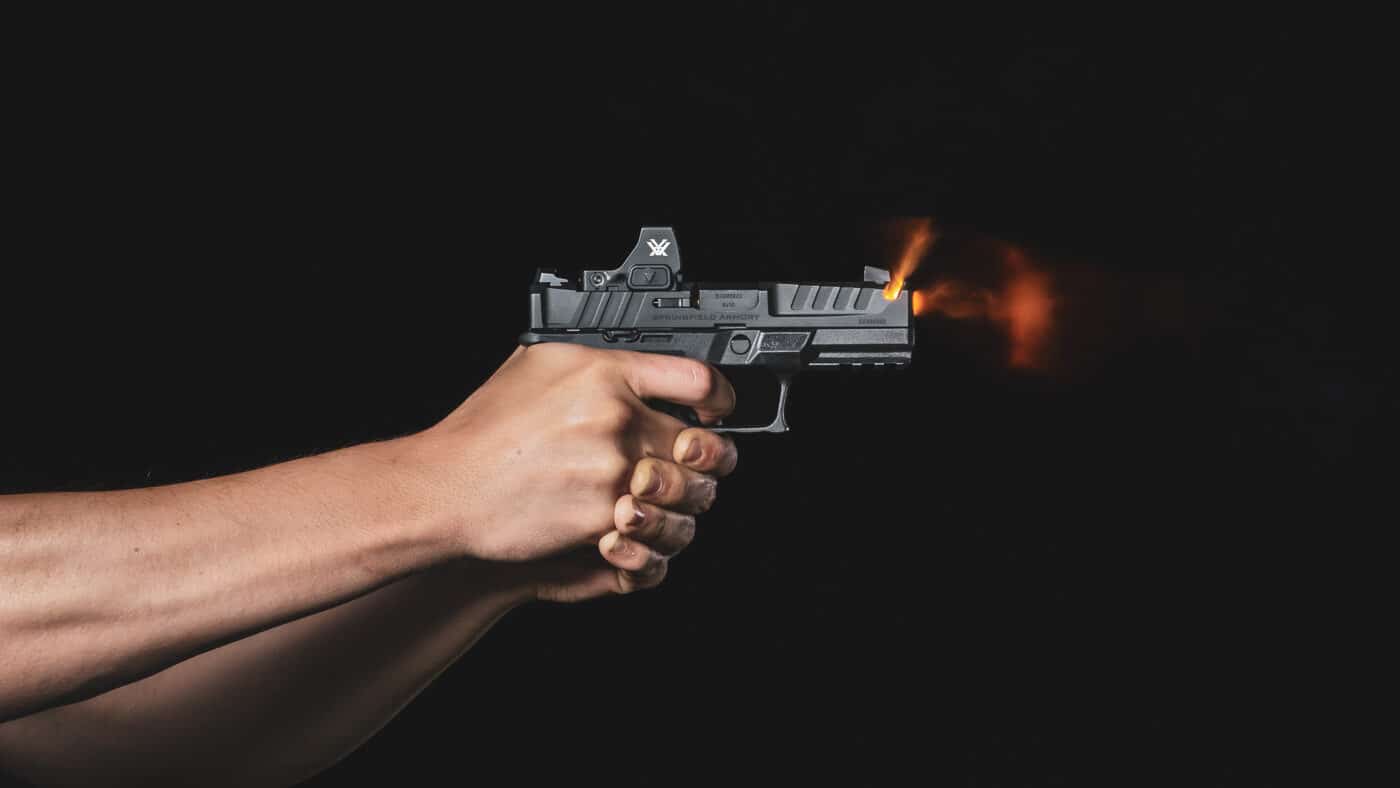
Fortunately, that has all changed for the better and contemporary pistols have by and large, corrected the shortcomings of the past. My Springfield Armory Echelon 4.0C came complete with interchangeable backstraps so fit can be optimized for the widest possible range of hand sizes. To my thinking, that’s a pretty big deal for a pistol with a 15+1 round capacity as shooters with smaller hands can still easily manage it. And as savvy shooters have known all along, the classic single-stack 1911 can accommodate a very wide range of hand sizes.
How can you check for proper fit with an autopistol? Years ago, I picked up this trick from legendary lawman Jim Cirillo and it has served me very well over the years. To run an autopistol, the distal pad of the index finger should be placed on the trigger. To test hand fit, properly position the finger on the trigger of an unloaded pistol (check it twice!) and run the grip backwards.
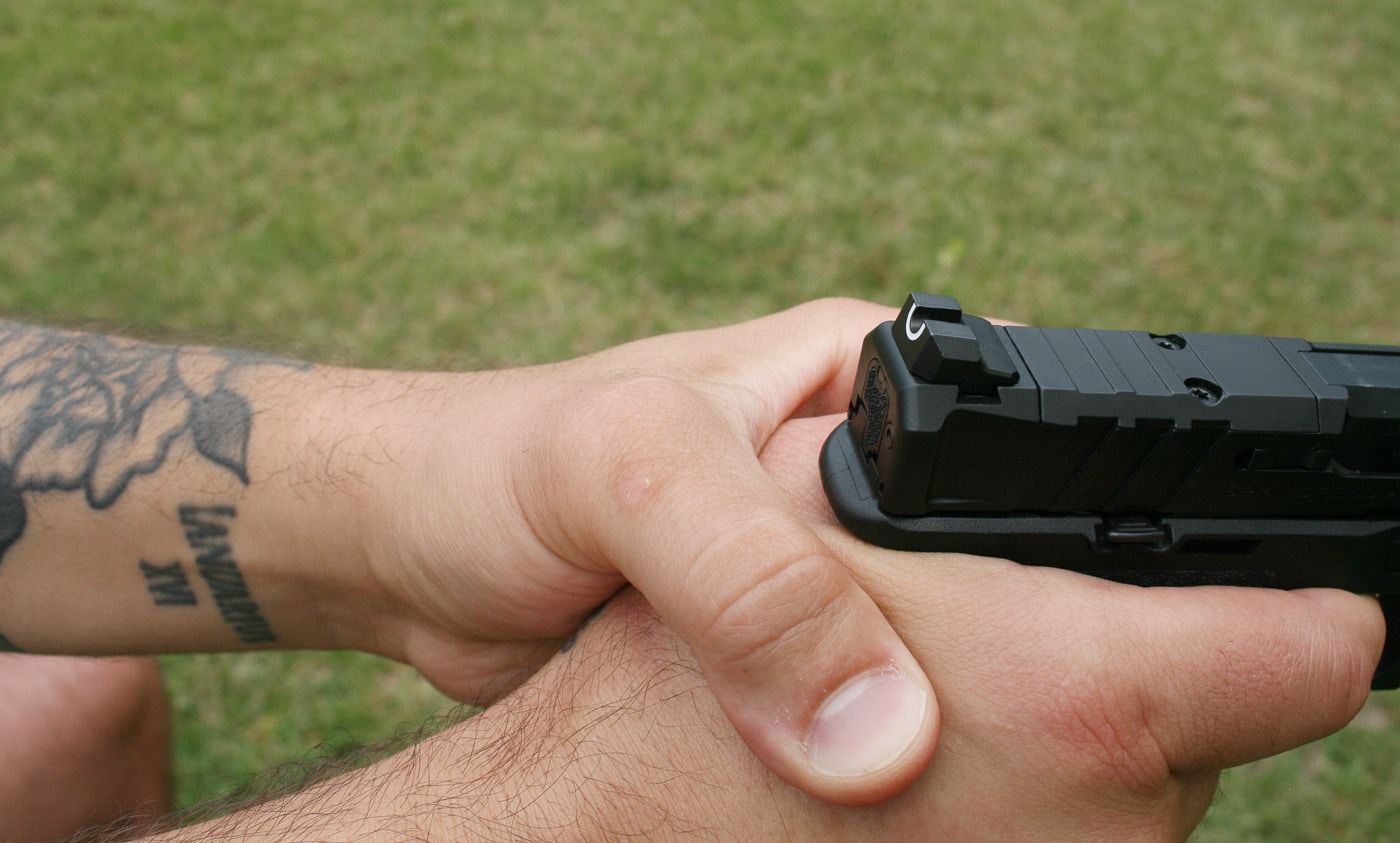
Is the backstrap of the pistol properly centered in the thumb crotch between the thumb and index finger? Or is the backstrap in contact with the base of the thumb? If that is the case, the grip frame is too large for the hand. Should you properly center the backstrap on a shooter with smaller hands, there isn’t significant length to get proper placement and instead they are working the trigger with the finger tip. The end result is lateral dispersion of shots all over the target. Proper fit is everything!
On the other extreme small micro pistols and mouse guns can also be problematic. Big hands and fingers hanging off the bottom can also create grip problems. Left to my own designs, I prefer a pistol with a grip frame I can get all my fingers around.
Stay Grip Focused
A common mistake I see with some shooters is exerting significantly greater grip pressure with the dominant hand and not enough with the support hand. Again, this may not be perceptible at short range, but as distance increases or in multiple shots it becomes readily apparent. Simply tightening up the support hand typically fixes the problem.
[Read about Ayoob’s Technique of the Crush Grip.]
A problem common to the aging process is diminished grip strength. I know my grip isn’t what it was 30 years ago, and it’s compounded by a touch of arthritis in my support hand. Where I took grip for granted in the not-so-distant past, I now have to make a conscious effort and mentally focus on it. If you want to recover or improve grip strength, there are all sorts of aids out there including spring-loaded hand exercisers which can pay dividends. I’m partial to the IronMind EGG, which is a soft, polymer ball that can improve hand strength or aid in rehabilitation from an injury.
Conclusion
So team, if those hits on target aren’t where they are supposed to be, it may not be your trigger control or your sight picture. Take a hard look at your grip and, if necessary, make the corrections. It’s very likely you will then be back on top of your game.
Editor’s Note: Be sure to check out The Armory Life Forum, where you can comment about our daily articles, as well as just talk guns and gear. Click the “Go To Forum Thread” link below to jump in!
Join the Discussion
Featured in this article
Read the full article here

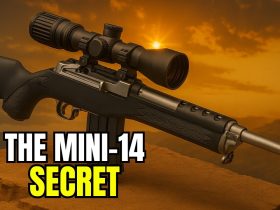
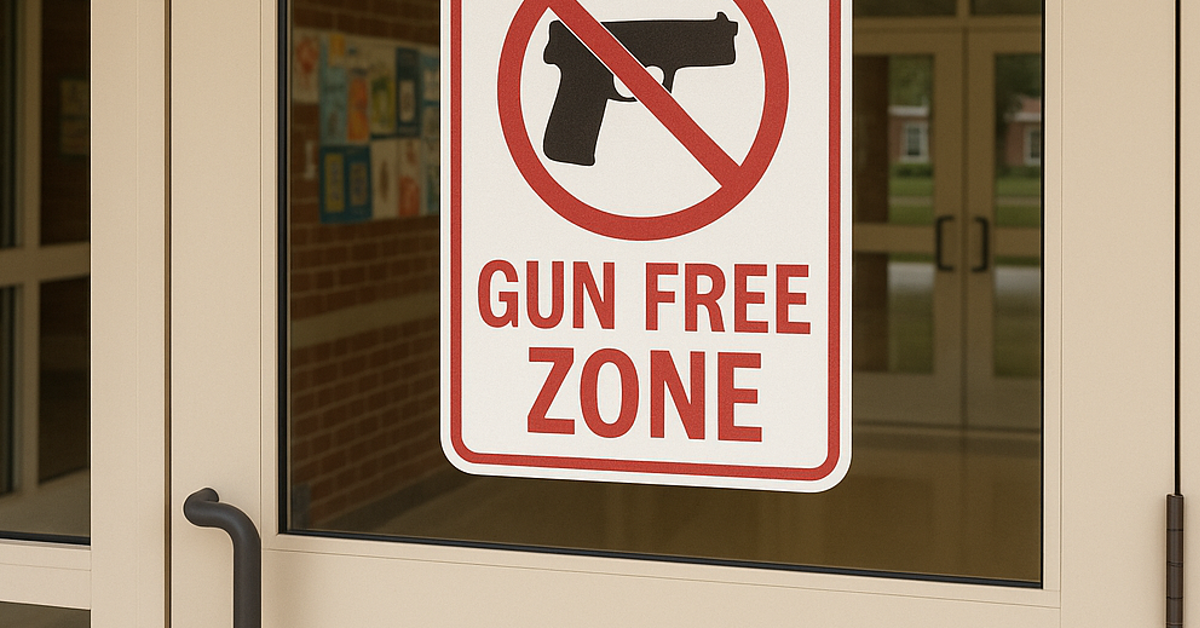
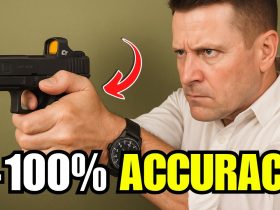

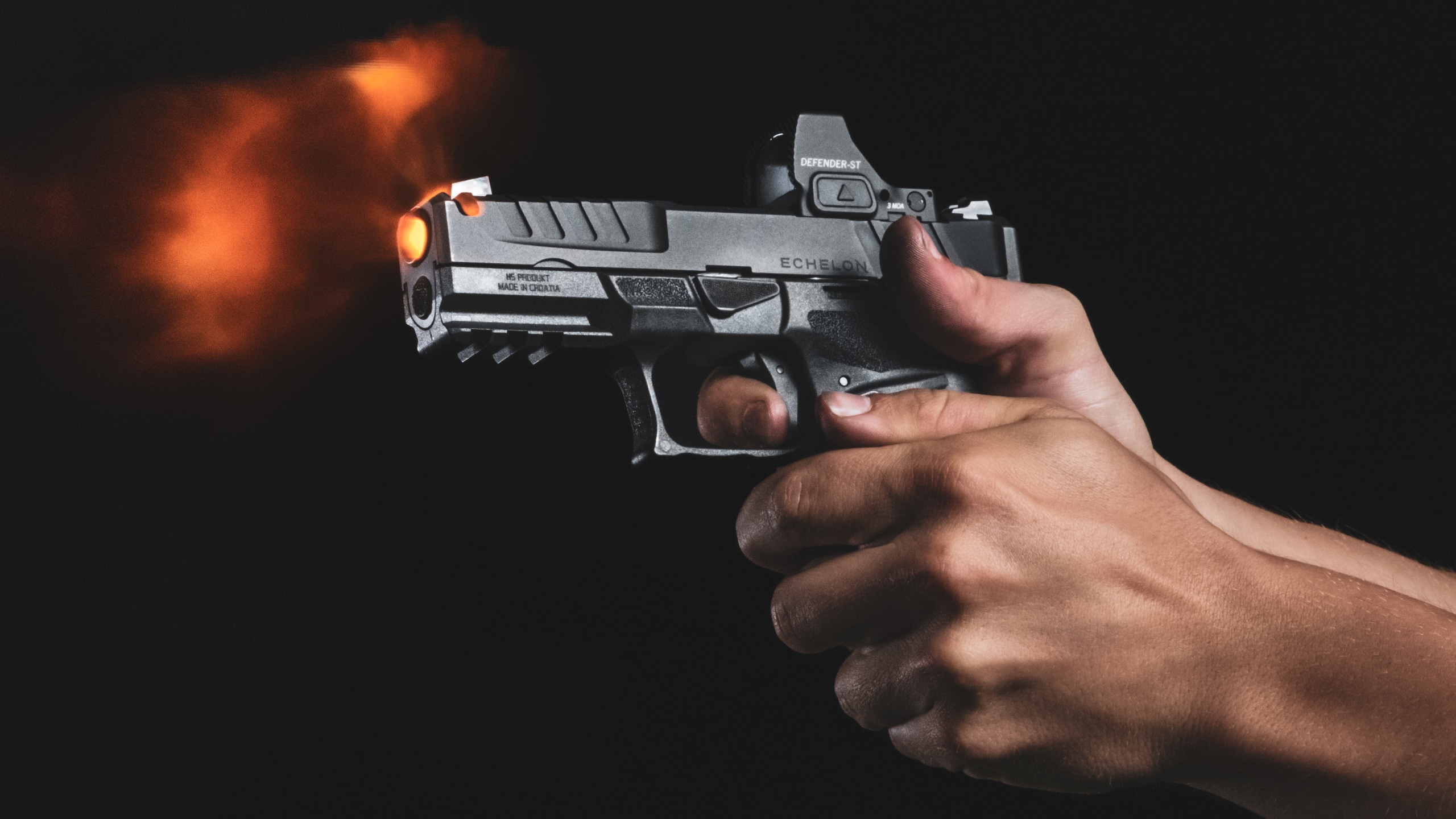
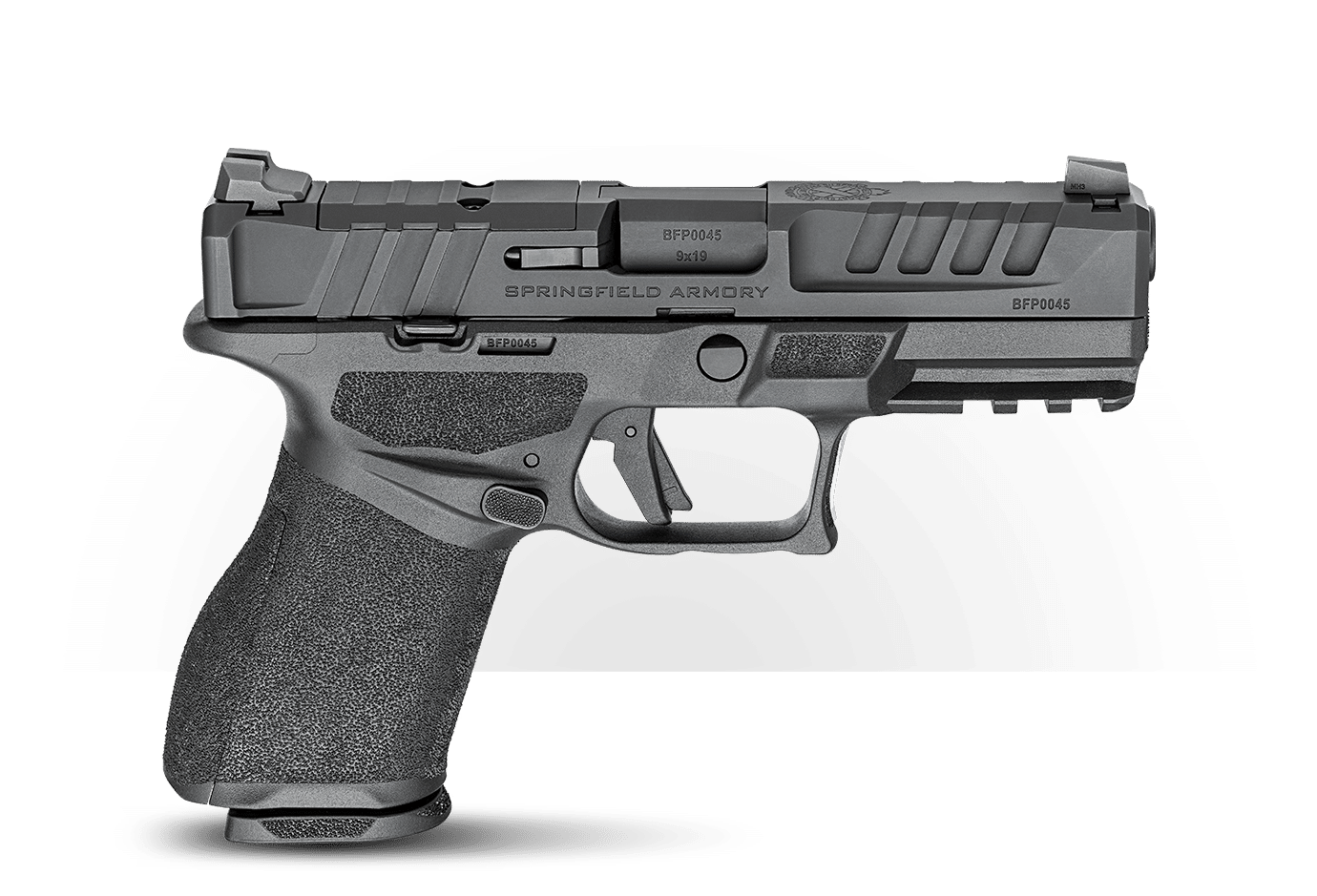







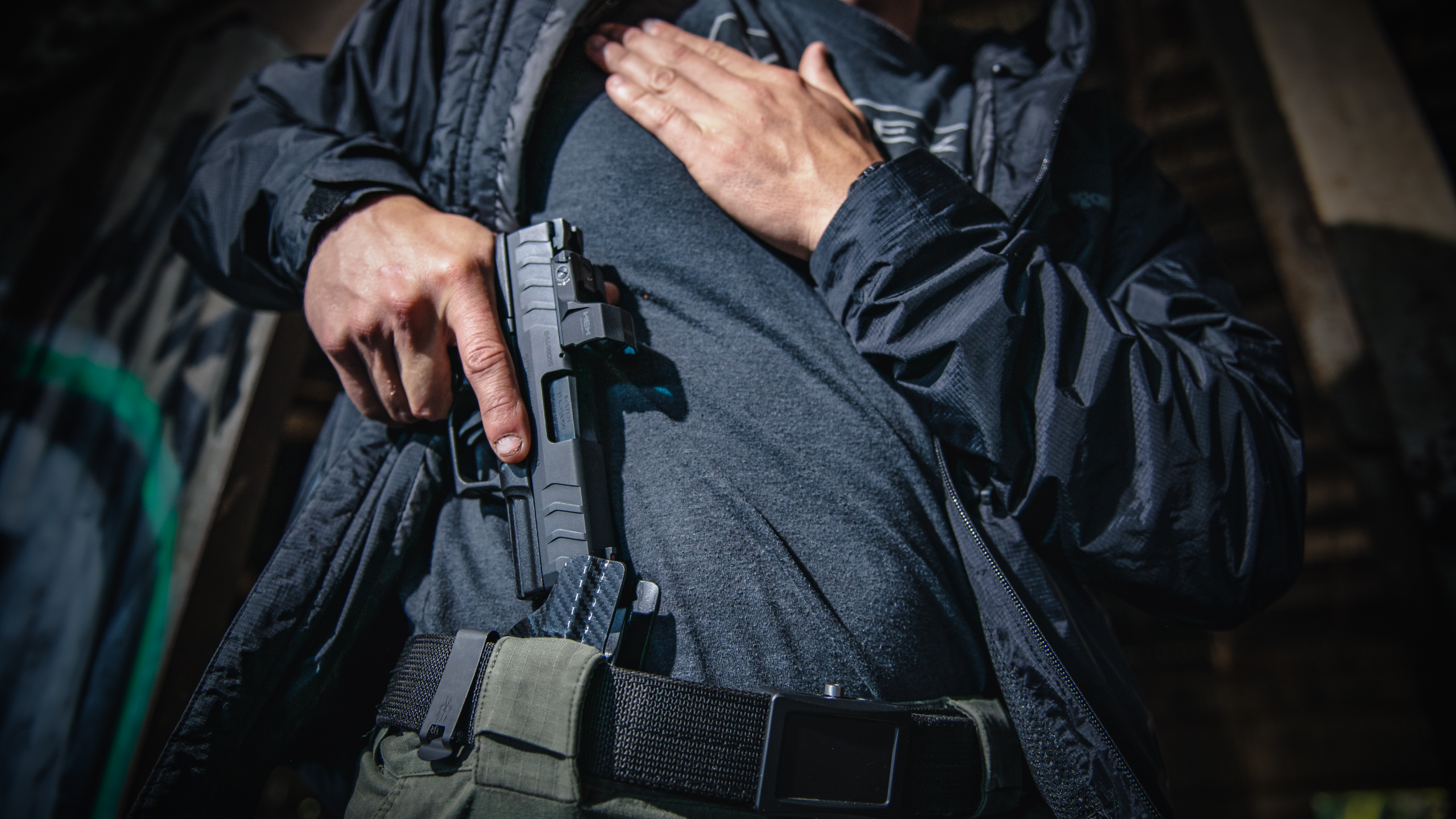
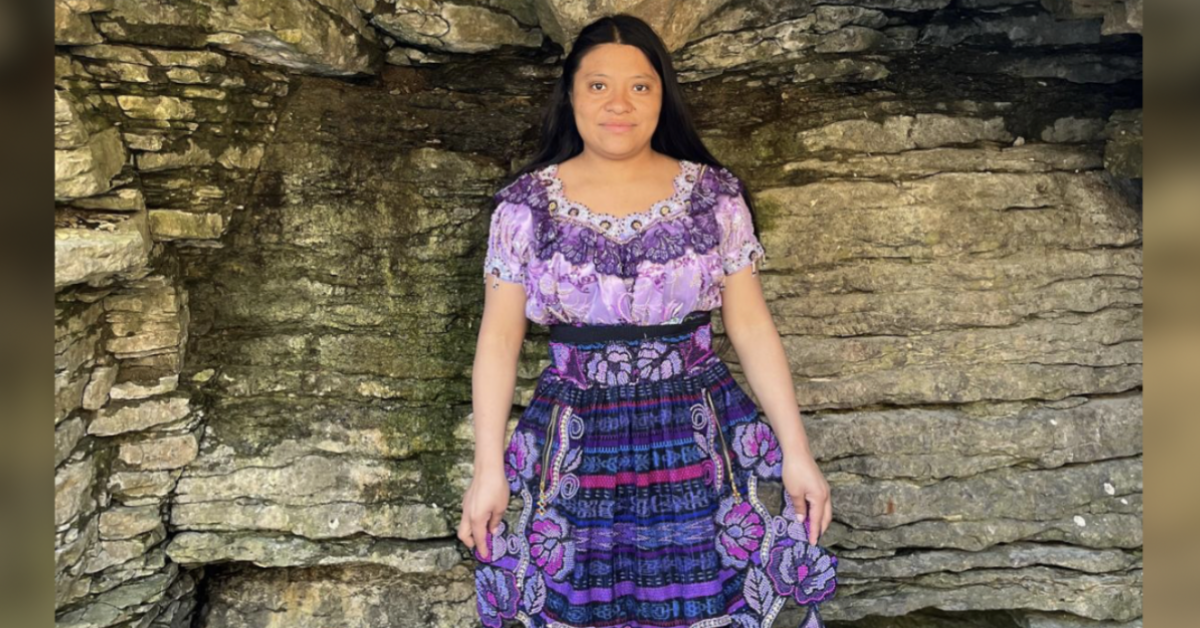
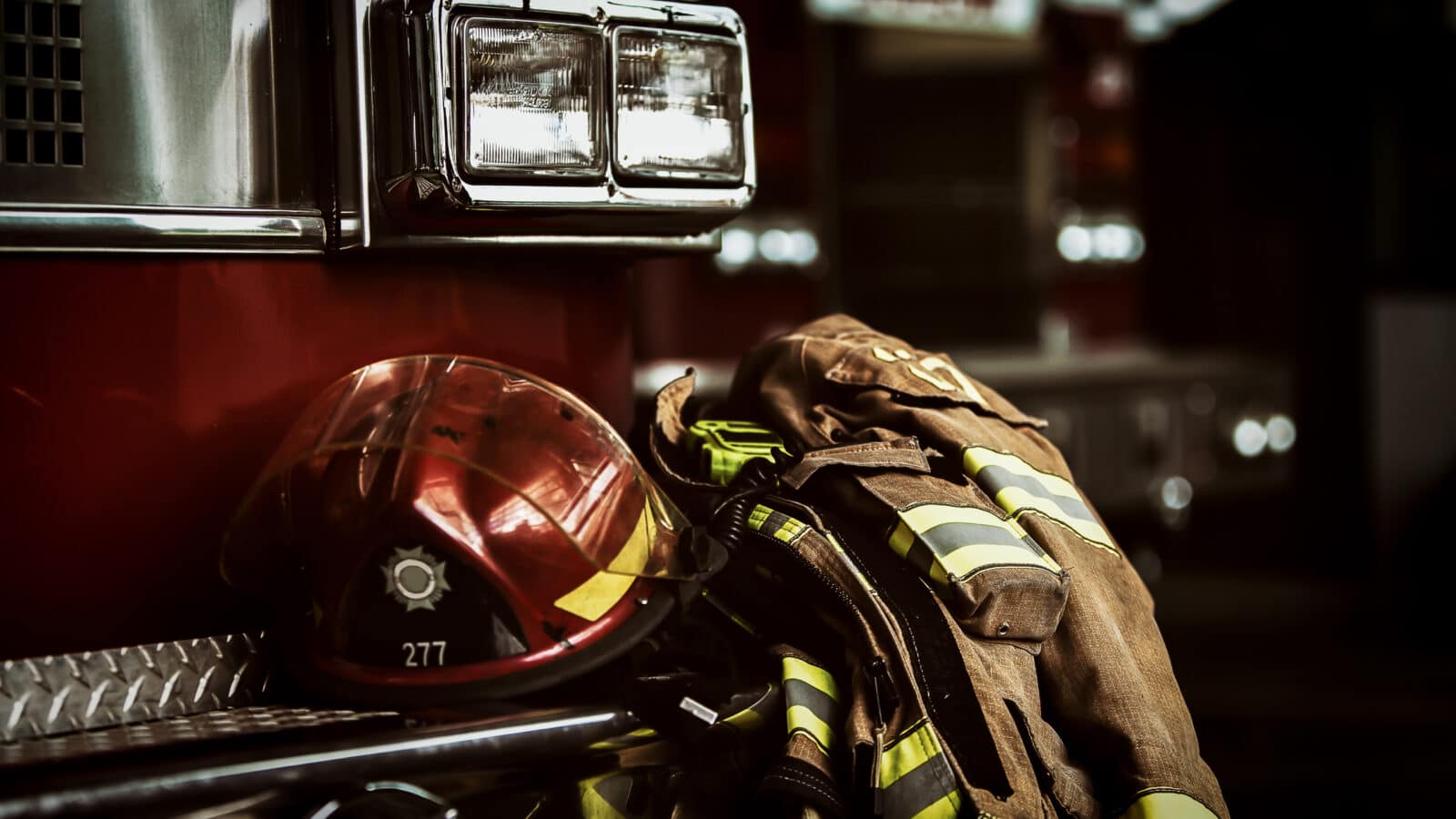

Leave a Reply